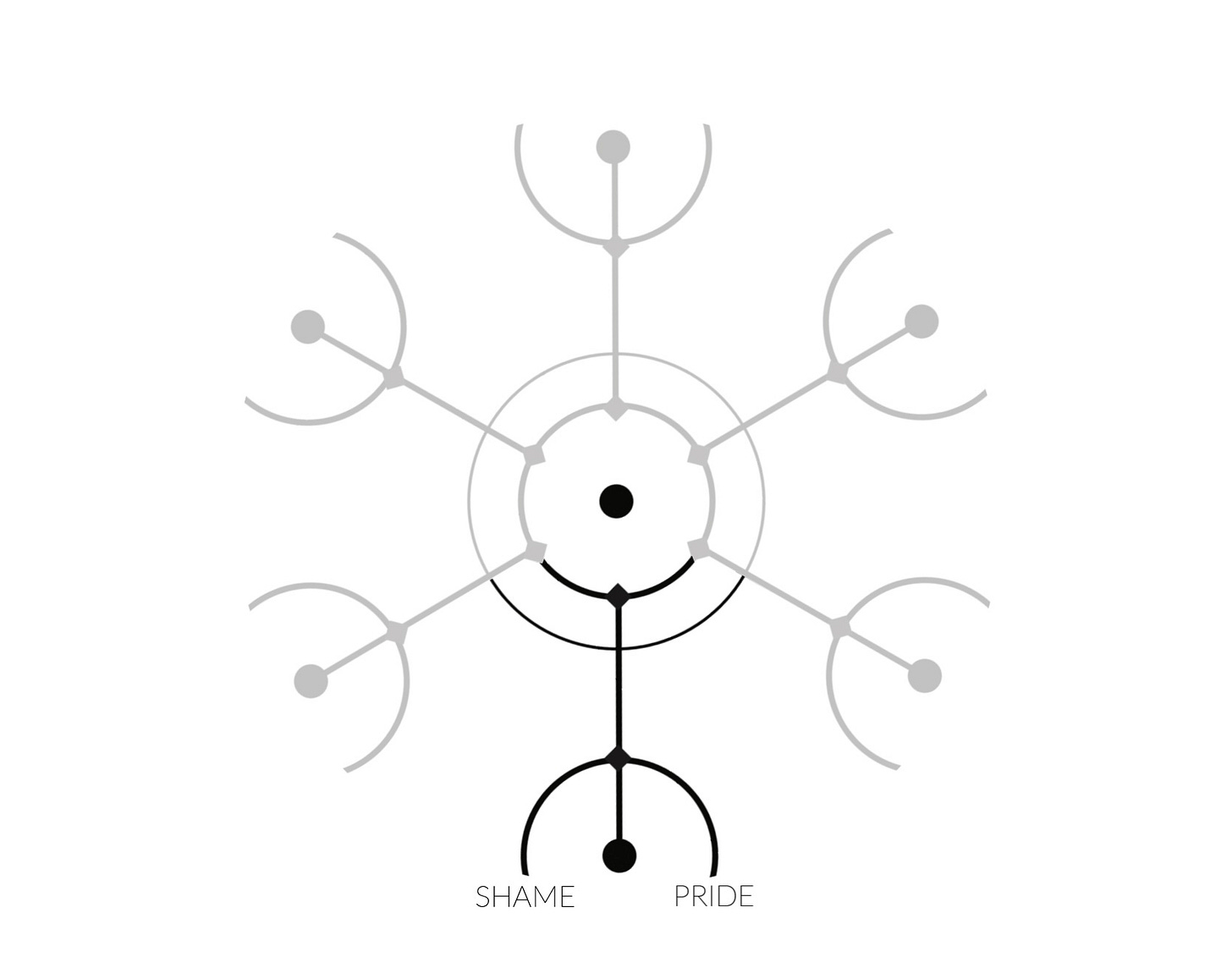The Flavors That Made You
Digging into the soil of your life to understand who you are, where you come from, and where you're going
Cutting Room - This piece is a part of an ongoing series featuring segments of writing that were ultimately cut from the final draft of my book, ‘Which Way Is North’. The reasons these pieces were cut are varied, but nothing was cut for lack of being interesting. There are times when this unpublished writing becomes relevant enough to be worth sharing; in the very least, to show how much goes on behind-the-scenes in the making of the books people finally see.
This piece was cut from the ‘What You Rest Upon’ chapter. It is a meditation on the ‘soil of your life’, which is about the ingredients that make you who you are physically, emotionally, mentally, and spiritually. Who is your family? Who is your community? What makes your body? What makes your land? An early draft of this chapter focused a lot on the literal role food plays in answering these questions. Thanksgiving is a holiday that American culture has set aside to focus on precisely these things. As is the case with all meditations of ‘What You Rest Upon’, it is a holiday brimming with the energies of both pride and shame.
The Soil Of Your Life
A teaspoon of healthy soil will hold up to 50 billion microbes, comparable to the number of stars in a galaxy. Each of them is a singular grain in the story of life. What would you find if you were to take a small sample from the soil of your life and examine what it contains?
It would be impossible to catalog everything. Like a cupboard full of spices, the soil of your life - through family - gets passed down as recipes. In the complexity of the multitude of ingredients emerges the simplicity of the characters and stories that hold their memories. The flavor of life tasted through the bitter sweetness of tradition.
In my New England upbringing, we treated Thanksgiving as our most treasured holiday of the year. The holiday’s story points a finger to the ground the American nation was built upon and asks questions about how we got here.
There are tellings of the Thanksgiving story that are colored through a lens of pride, describing a feast of welcome between indigenous tribes and the settlers who arrived here. A story of peace and sharing.
There are tellings of the Thanksgiving story that are colored through a lens of shame, describing a plundering of conquest over indigenous by the settlers who arrived here. A story of attack and taking.
The truth of it that I find in between is that Thanksgiving is a time to honor the tradition of learning about each other. To gather around the table and with a deep, shared inhale of gratitude with whomever cares to join, simply enjoy each other’s food.
The flavors people bring sings with the stories of their family and their culture. What a gift it is to experience the soil of each other’s lives through the complexity of taste that imparts an understanding better than words ever could. Like the soil of the earth itself, our family flavors remember everything.
At my childhood Thanksgiving table, it was a feast of stories, symbols, and memories told through food, the soil of a good life I was happy to rest upon and grow. The main courses were a festival of memories from my father’s travels, who graced the kitchen like a stage. Every bite held the color of his adventurous character’s story. His mother, my grandmother, would bring the overcooked green beans from a can, reminiscent of what she had to eat through the Great Depression that stole her family’s fortune. The dish was easy on her hands which ached with arthritis yet still remembered the sonatas from her concert pianist days. Sometimes after dinner, the piano would become her stage. My mother would make sure to have a tray of small gherkin pickles on the table in memory of her German parents who had immigrated to escape the holocaust. Cigars after dinner to remember my great-grandfather. Smoked along sips from small chilled glasses of black licorice flavored sambuca as my sisters, cousins and I heard stories of how my aunts and uncles used to play. As one generation got older, the competition over who baked the pies began to rage.
All of these recipes and flavors are the ingredients of the soil of my life. They are memories I can better taste than describe. They are memories that if you find your seat at my dinner table, I might cook for you some day - so we can remember together.
How often do you think of the ingredients that make up the soil of your life and the recipes of characters and story that tell them? How might you bring out its sweetness if you were to cook it with the warm fire of your loving attention? Let’s assume you had to write out the ingredients to the family recipe that makes you. What would they be?
A Journaling Exercise
Remember the flavors that made you. Write down the list of names in your family tree going as far back into your ancestry as you can. Here is a blueprint to get you started. Feel free to add any distant ancestors whose stories speak to you. If you would like, you can also expand to aunts, uncles, and cousins, or anyone else who you feel is an important part of what made you.
Mother
Grandmother (maternal)
Great grandmother
Great grandfather
Grandfather (maternal)
Great grandmother
Great grandfather
Father
Grandmother (paternal)
Great grandmother
Great grandfather
Grandfather (paternal)
Great grandmother
Great grandfather
Next, capture their flavors. In one word or symbol, how would you describe the ingredient they bring to the recipe of your story?
Next to each of these names, write down what you think would be the title to their story. In thinking about this, consider the signs, symbols, even food, drink or media you might associate with each of their characters. Share a bit more on the page underneath their name and story title to help complete your remembrance of what their legacy brings.
For example, both of my parents and all of my grandparents have passed. I associate with my father, the signs of the dragon and the phoenix as well as the music of Pink Floyd. With my mother, woodpeckers, the Talking Heads, and strawberry daiquiris. It might be challenging for the deeper ancestors of your life whose stories you didn’t directly experience. For them, try capturing key elements of what you know about their stories. For example, I know my grandmother was a concert pianist and I have an old photo of my grandfather from the war driving a Jeep. The key is to boil down their story to a simple title that becomes a shorthand for their spirit so that when it flowers in your world you can see it.
Mother - [Title of her story]
Grandmother (maternal) - [Title of her story]
Great grandmother - [Title of her story]
Great grandfather - [Title of his story]
Grandfather (maternal) - [Title of his story]
Great grandmother - [Title of her story]
Great grandfather - [Title of his story]
Father
Grandmother (paternal) - [Title of her story]
Great grandmother - [Title of her story]
Great grandfather - [Title of his story]
Grandfather (paternal) - [Title of his story]
Great grandmother - [Title of her story]
Great grandfather - [Title of his story]
Maybe this is the first time you’ve sat down and reflected on your ancestry in this way. By sitting down and listing out the ingredients that make you, you truly can begin to taste their sweetness and explore who you might remix and recreate with each flavor through your own expressions.
In a way, that can bring the sweetness of knowing they are with you. It can also inspire you to share that part of their story as tribute - to bring to life what is gone in honoring that you get to dance in the here and now while the dead play their music, grateful to have you listening. What could be a more beautiful reason to create than that?







